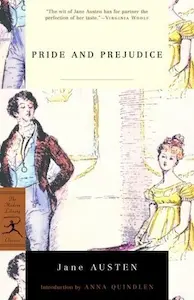Pride and Prejudice - Summary
Jane Austen

Introduction
“Pride and Prejudice” by Jane Austen is a timeless classic that explores the complexities of love, societal expectations, and the power dynamics between men and women in early 19th-century England. Set in the fictional town of Meryton, the novel follows the lives of the Bennet family, primarily focusing on the second eldest daughter, Elizabeth Bennet. Through Austen’s witty and insightful writing, she delves into themes of class, marriage, and personal growth, captivating readers with her memorable characters and engaging storytelling.
The Bennet Family and Their Social Standing
The novel opens with the introduction of the Bennet family, consisting of Mr. and Mrs. Bennet and their five daughters: Jane, Elizabeth, Mary, Kitty, and Lydia. The Bennets belong to the landed gentry, a social class that falls between the aristocracy and the working class. However, their lack of a male heir and Mrs. Bennet’s obsession with marrying off her daughters put their social standing at risk.
The Arrival of Mr. Bingley and Mr. Darcy
The arrival of Mr. Bingley, a wealthy and amiable bachelor, in the neighborhood sparks excitement among the Bennet sisters. Jane, the eldest Bennet daughter, forms a connection with Mr. Bingley, while Elizabeth finds herself intrigued by his close friend, Mr. Darcy. However, Mr. Darcy’s initial aloofness and pride lead Elizabeth to form a negative opinion of him, setting the stage for the central conflict of the novel.
The Dance of Pride and Prejudice
As the story unfolds, Austen skillfully weaves together the themes of pride and prejudice, showcasing how these traits can hinder personal growth and relationships. Elizabeth’s prejudice against Mr. Darcy is fueled by her pride in her own intelligence and wit, while Mr. Darcy’s pride stems from his elevated social status and wealth. Their interactions are marked by witty banter and misunderstandings, creating a tension that keeps readers engrossed.
The Role of Marriage in Society
Austen uses the institution of marriage as a lens to examine the societal expectations placed upon women in the 19th century. Mrs. Bennet’s relentless pursuit of advantageous matches for her daughters reflects the prevailing belief that a woman’s worth lies in her ability to secure a wealthy husband. However, Elizabeth challenges this notion by prioritizing love and personal compatibility over financial security, a radical stance for the time.
The Influence of Class and Wealth
Class and wealth play significant roles in “Pride and Prejudice,” highlighting the stark divisions within society. The landed gentry, represented by the Bennet family, aspire to marry into the upper class, as exemplified by Mr. Bingley’s sisters. The snobbery and condescension displayed by characters like Lady Catherine de Bourgh further emphasize the importance placed on social standing. Austen critiques these societal norms, advocating for the importance of character and integrity over material wealth.
The Transformation of Elizabeth Bennet
One of the most compelling aspects of the novel is Elizabeth Bennet’s personal growth and transformation. Initially, she is quick to judge and holds onto her prejudices against Mr. Darcy. However, as she learns more about him and confronts her own shortcomings, Elizabeth begins to question her initial judgments. Through her experiences, Austen highlights the importance of self-reflection and the ability to overcome one’s pride and prejudices.
The Power of Satire and Irony
Austen’s use of satire and irony adds depth and humor to the narrative. She employs these literary devices to expose the flaws and follies of her characters and society as a whole. The character of Mr. Collins, for instance, serves as a source of comedic relief as his obsequiousness and pomposity are ridiculed. Austen’s sharp wit and keen observations make “Pride and Prejudice” an entertaining read while also providing social commentary.
Love and Relationships
Love and relationships are at the heart of “Pride and Prejudice.” Austen explores various types of love, from the infatuation between Jane and Mr. Bingley to the passionate and transformative love that develops between Elizabeth and Mr. Darcy. Through her characters’ experiences, Austen emphasizes the importance of emotional connection and mutual respect in a successful relationship.
The Importance of Female Agency
In a society where women were expected to be passive and subservient, Austen presents strong and independent female characters. Elizabeth Bennet, with her intelligence and refusal to conform to societal expectations, challenges the traditional role of women. Austen advocates for female agency and the right to choose one’s own path, rather than succumbing to societal pressures.
Conclusion
“Pride and Prejudice” remains a beloved novel that continues to resonate with readers today. Jane Austen’s exploration of love, class, and personal growth captivates audiences, while her witty and insightful writing style keeps them engaged. Through memorable characters like Elizabeth Bennet and Mr. Darcy, Austen provides a window into the complexities of human relationships and the power dynamics of a society driven by pride and prejudice.